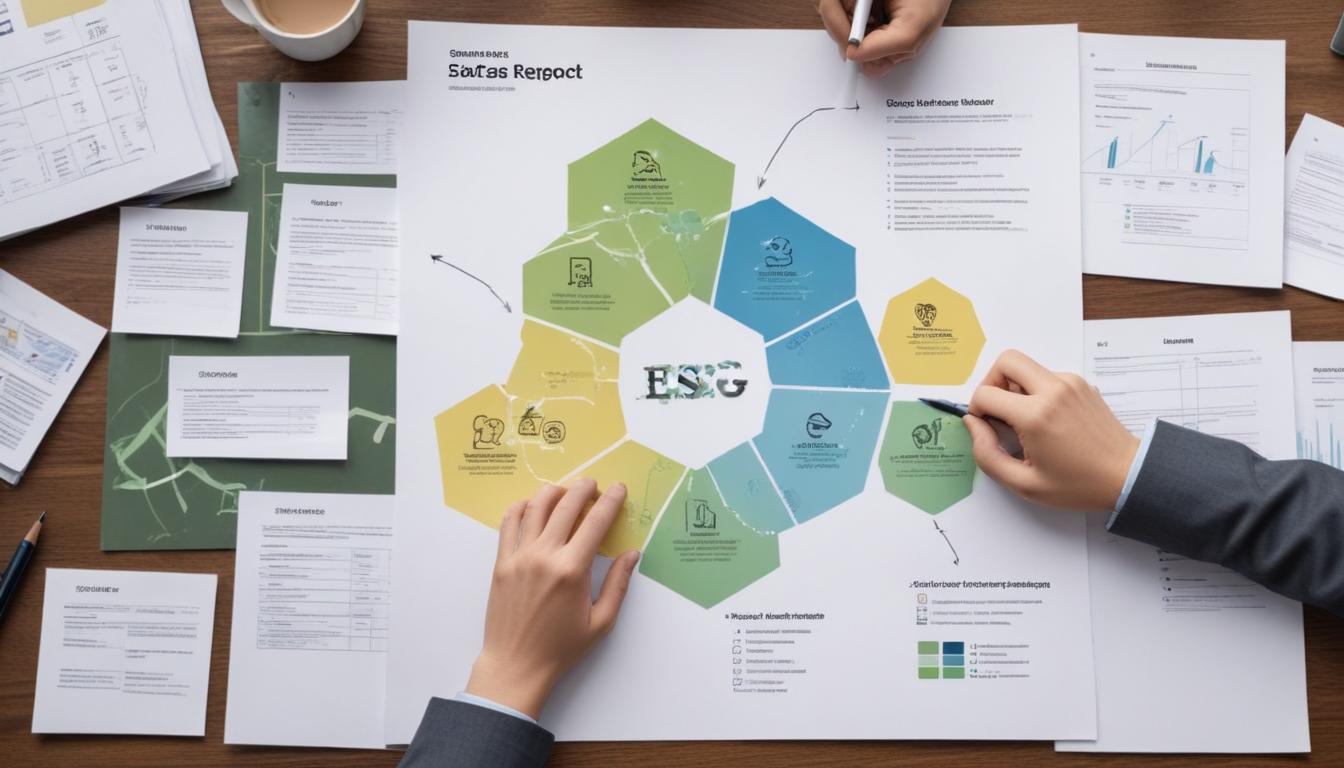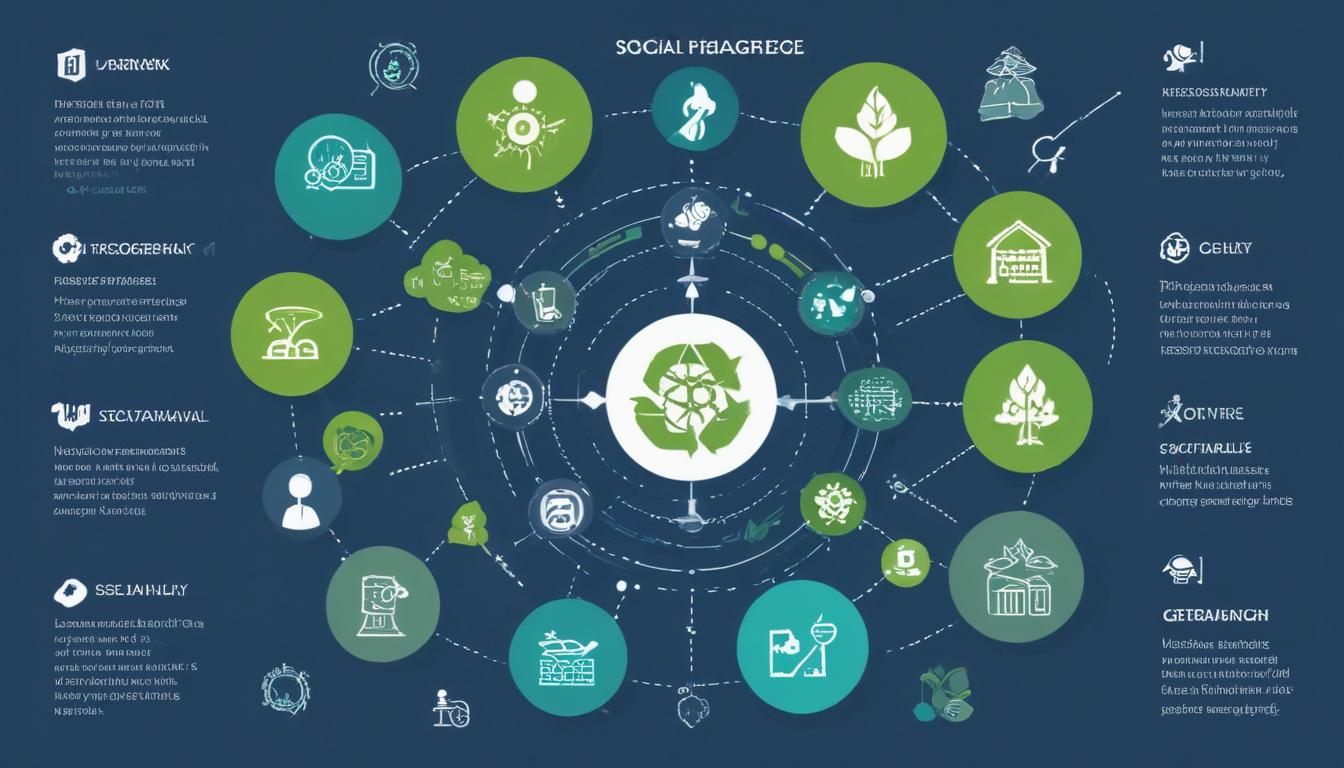Understanding what is an ESG report for your business
An ESG report, or Environmental, Social, and Governance report, is a disclosure that communicates a company’s sustainability practices and performance, providing stakeholders with insights into its ethical impact and compliance with responsible practices.
What is an ESG report? It’s an essential tool for businesses today, blending environmental, social, and governance factors into reports that enhance accountability. Curious about its impact on your operations? Let’s dive into the details!
Defining ESG: What Does It Mean?
Understanding ESG begins with recognizing that it stands for Environmental, Social, and Governance factors. These elements serve as a framework for assessing a company’s impact on society and the environment. Businesses are increasingly incorporating ESG criteria into their operational strategies to foster sustainability and ethical practices.
The Environmental aspect focuses on how a company performs as a steward of nature. This includes evaluating the use of resources, waste management, and the company’s carbon footprint. Companies are expected to actively engage in practices that minimize environmental harm while promoting conservation.
Next is the Social dimension, which examines the company’s relationships with its stakeholders, including employees, suppliers, customers, and the communities in which they operate. Social factors consider labor practices, diversity, and community engagement. A strong commitment to social responsibility can enhance corporate reputation and stakeholder trust.
Finally, the Governance aspect deals with a company’s leadership, executive pay, audits, internal controls, and shareholder rights. Good governance practices ensure transparency and accountability. Companies that prioritize ESG principles not only attract investment but also foster long-term growth and resilience in an ever-evolving marketplace.
Key Components of an ESG Report
A comprehensive ESG report includes several key components that provide stakeholders with a clear understanding of the company’s sustainability practices. First and foremost, the Environmental section outlines the company’s impact on the planet. This includes information on resource consumption, waste management strategies, and carbon emissions. By presenting these metrics, companies demonstrate their commitment to reducing environmental footprints.
Next, the Social component addresses how a company manages relationships with various stakeholders. This encompasses employee welfare, diversity and inclusion policies, and community engagement initiatives. Highlighting these areas showcases the company’s dedication to fostering a positive societal impact, which is increasingly crucial to consumers.
The Governance section evaluates the organization’s leadership structure and decision-making processes. It includes details on board diversity, executive compensation, and ethical guidelines. Effective governance practices are essential for building trust, assuring investors that the company is run responsibly and transparently.
Another vital aspect often included is performance metrics. These assess the company’s progress towards its ESG goals over time and are critical for benchmarking and accountability. By combining these elements, an ESG report not only conveys environmental and social responsibility but also reinforces the company’s value proposition to investors and customers.
The Importance of ESG Reporting for Businesses
ESG reporting is essential for businesses looking to thrive in today’s socially conscious landscape. This type of reporting highlights a company’s commitment to sustainability, transparency, and ethics, which are increasingly valued by investors and consumers alike. By publicly disclosing environmental, social, and governance practices, companies can build trust and credibility within their stakeholder communities.
A robust ESG report serves as a vital tool for attracting investment. Investors are increasingly considering ESG factors in their decision-making processes, as they seek to support companies that align with their values. This alignment offers a competitive edge in the market, potentially resulting in higher stock prices and lower capital costs.
Moreover, ESG reporting catalyzes internal improvements and accountability. By assessing their performance against established metrics, businesses can identify areas for growth and innovation. This focus on continuous improvement often leads to enhanced operational efficiency and reduced risks, demonstrating that responsible practices can positively impact the bottom line.
Aside from financial benefits, ESG reporting also positions companies as leaders in corporate responsibility. As consumers become more informed and selective, a strong ESG commitment can foster loyalty and boost brand reputation. Consequently, prioritizing ESG reporting is not just beneficial; it is essential for sustainable long-term success.
How to Create an Effective ESG Report

Creating an effective ESG report requires a strategic approach and a clear understanding of the essential elements. Begin by setting clear objectives for your report. Determine what key messages you want to convey and identify the stakeholders who will be reading the report. Tailoring content to your audience can significantly enhance engagement.
The next step involves collecting accurate and relevant data. Use quantitative metrics to measure your performance in key ESG areas, such as carbon emissions and employee diversity. Qualitative data, such as case studies or testimonials, can complement these metrics and provide a fuller picture of your company’s initiatives.
Once you have gathered your data, organize it effectively. Structure your report into insightful sections that reflect the main components of ESG: Environmental, Social, and Governance. This structure not only improves readability but also ensures that stakeholders can easily find the information they seek.
Visual representation of data is crucial. Use charts, graphs, and infographics to present complex information clearly and engagingly. Finally, ensure that your report is transparent and authentic. Clearly outline your methodologies, recognize areas for improvement, and include future goals. An effective ESG report not only informs but also fosters trust and accountability among stakeholders.
Challenges in ESG Reporting and Compliance
While ESG reporting is crucial for demonstrating corporate responsibility, several challenges can hinder an effective process. One of the primary issues is the lack of standardization in reporting frameworks. Various organizations and regulatory bodies propose different guidelines, leading to confusion and inconsistency. Companies may struggle to determine which standards to follow, resulting in reports that are not directly comparable.
Another significant challenge lies in the data collection process. Gathering reliable and relevant data can be difficult, especially for ESG metrics that require qualitative insights. Companies often face hurdles in tracking their performance in areas such as social responsibility or environmental impact. This complexity can lead to incomplete or inaccurate information being reported.
Compliance with regulatory requirements adds another layer of difficulty. Organizations must stay informed about changing regulations and ensure that their reporting meets these standards. This process can be resource-intensive, particularly for smaller companies with limited capabilities.
Moreover, stakeholder expectations continue to evolve. Investors and customers increasingly demand greater transparency and detailed disclosures. Meeting these expectations requires ongoing commitment and adaptation, which can pose a strain on resources. Navigating these challenges is essential for businesses aiming to maintain credibility and enhance their ESG performance over time.
Future Trends in ESG Reporting
As sustainability becomes a central focus for businesses, the future of ESG reporting is poised for significant evolution. One prominent trend is the increased demand for real-time data. Stakeholders are expecting companies to provide up-to-date insights into their ESG performance, rather than relying solely on annual reports. This shift will push organizations to adopt technologies that facilitate continuous monitoring and reporting.
A further trend involves the integration of advanced analytics and artificial intelligence. These technologies can enhance data collection and analysis, allowing companies to identify trends, improve accuracy, and forecast ESG impacts more effectively. This data-driven approach will provide valuable insights that can inform strategic decision-making.
Moreover, we can anticipate a stronger emphasis on stakeholder engagement. Companies will need to communicate their ESG efforts and challenges more transparently. This includes not only sharing successes but also acknowledging areas requiring improvement. Such openness can foster trust and strengthen relationships with consumers and investors.
Finally, sustainability regulations are expected to become more stringent across the globe. Organizations will need to adapt their reporting practices to meet these evolving legal requirements. Anticipating these trends will be crucial for businesses aiming to remain competitive and responsive in an increasingly conscientious market.
Frequently Asked Questions
What is an ESG report?
An ESG report is a disclosure document that outlines a company’s environmental, social, and governance practices, helping stakeholders assess its sustainability efforts.
Why is ESG reporting important for businesses?
ESG reporting is crucial as it improves transparency and accountability, attracts investors, boosts brand reputation, and aligns business operations with sustainability goals.
What are the main components of an ESG report?
The main components include Environmental impact, Social responsibility practices, and Governance structures, detailing how a company performs in these areas.
How can companies improve their ESG reporting?
Companies can enhance their ESG reporting by setting clear objectives, using reliable data sources, engaging stakeholders, and utilizing advanced analytics for transparency and accuracy.
What challenges do businesses face in ESG reporting?
Common challenges include the lack of standardization in reporting frameworks, difficulties in data collection, regulatory compliance, and evolving stakeholder expectations.
What future trends are expected in ESG reporting?
Future trends include a demand for real-time data, increased use of advanced analytics, stronger stakeholder engagement, and adapting to stricter sustainability regulations.
